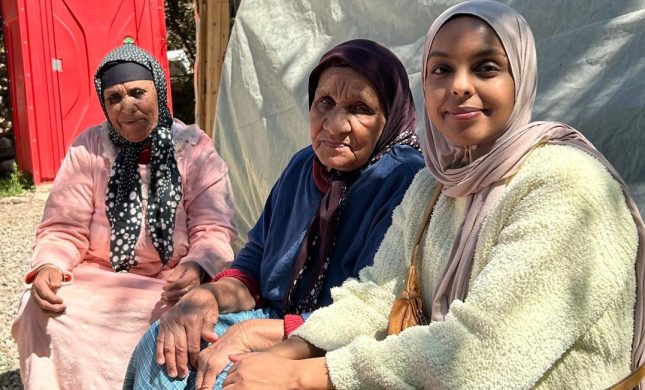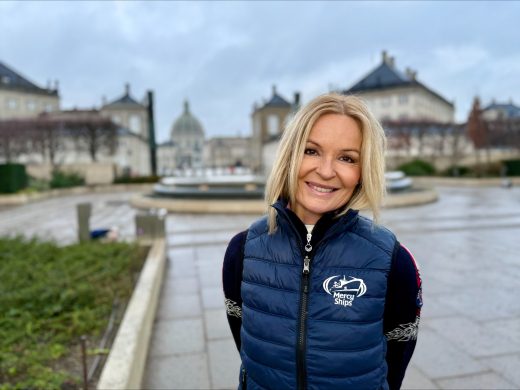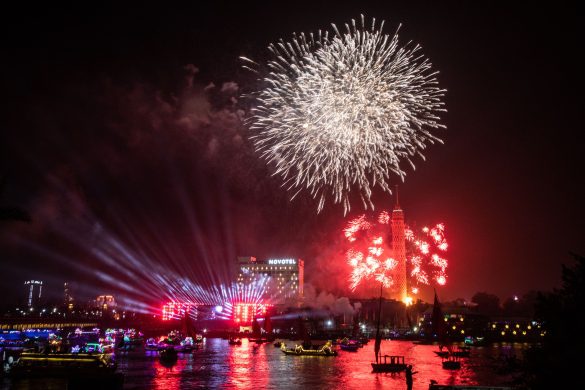Wanted: greener fish – Market trends require stronger environmental performance by seafood industry
ROME, 25 September: The 400 billion US dollar seafood industry has no choice but to adapt to intensifying demand from retailers and consumers for “environmentally friendly” fish, FAO said Tuesday.
During opening remarks made to industry representatives attending the 2007 Seafood Industry Congress (25-27 September, Dublin), Grimur Valdimarsson, Director of FAOs Fishing Industries Division, said that the need for seafood producers to guarantee environmental performance is unavoidable.
– The push towards sustainable fisheries is not just coming from government or environmental groups, but from the market itself, Valdimarsson said, noting that major seafood retailers like Unilever, Tesco, Walmart and Asda have already committed to putting on their shelves only fish that was harvested or raised sustainably (uden rovfiskeri).
– In recent years the seafood industry has been uncertain as to whether these trends represent a momentary fad (døgnflue). Today, there is no question: it is real, it is a sea change, and it is the way of the future, he said.
In broad terms, this means that producers will need to be able to assure retailers and consumers that their fish were not taken from overexploited stocks, farmed in ponds where mangroves once stood, or caught in nets without turtle-saving excluder devices installed.
Doing so requires monitoring fishing activities via tracking systems, labels and similar mechanisms.
There are already a number of initiatives under way that seek to do this, established either by seafood retailers or public interest organizations. While expressing concern over the proliferation of diverse and competing efforts, Valdimarsson stressed that, overall, the trend is a positive one.
Transition anything but easy
– Complying with these new imperatives is technically extremely difficult, and so the challenge facing industry right now is finding ways of doing so that are both adequate and economically feasible, Valdimarsson acknowledged.
The capture fisheries sector should draw lessons from the last 25 years of food safety assurance in other sectors, which moved largely from being a government-run activity to one managed by industry itself within a government-established framework and subject to spot verification.
Seafood producers have been wresting with a similar problem for years now, which could help.
– Already, producers have put into place internal systems to ensure that they are providing seafood that is fresh, safe to eat, and of the highest quality – which is what todays consumers demand, Valdimarsson said, adding:
– You do not need to invent a new agency to guarantee that environmental standards are being met – monitor for environmental performance in a similar way, as you do for safety and quality.
Developing countries will have a tough time
Resource-strapped developing countries will have a particularly hard time making the transition to fully certifying their fisheries.
– They have already been struggling mightily to comply with health and safety regulations on fish imports put into place by importing countries in the developed world, Valdimarsson explained.
Helping resolve this problem is an issue of particular importance to FAO, he said, adding that the retailers shaping market trends have a responsibility to help suppliers in the developing world cope.
And FAO and other international development organizations working on fisheries and aquaculture will need new resources to help the developing world’s fisheries sector adapt.
Fishing rights key
The widespread practice of granting open or nearly-open access to fishing grounds is another challenge.
– Under the open access regime, fishing is an extremely competitive, zero sum game: if a fishermen does not land a fish, his competitor will, leaving little incentive to conserve the resource, according to Valdimarsson, and the consequence is overfishing. – So fishermen have a vested interest in not revealing what they’ve been doing, noted he.
– That must change, because the emerging paradigm requires the industry to be able to say exactly where, when and how a fish was caught. Only fishermen who hold clear rights and are not obliged to outfish a large group of competitors will feel secure enough to operate with that level of transparency, he explained.
Safety and quality issues
This years World Seafood Congress was co-organized by FAO, the UN Industrial Development Organization (UNIDO), the World Health Organization, the International Food Quality Certification Group, and Irelands Sea Fisheries Protection Authority in collaboration with the International Association of Fish Inspectors and with the support of the Irish Sea Fisheries Board, Enterprise Ireland, and the Food Safety Authority of Ireland.
The congress has traditionally focused on seafood safety and quality issues, but environmental concerns have risen higher on its agenda in recent years.
One of the most serious difficulties faced by fish exporters is coping with different safety standards being imposed by various importing countries.
The need for greater harmonization of standards and more equivalence agreements, as well as the proliferation of private standards and certification schemes for fish products will also be discussed in Dublin.
Kilde: www.fao.org















